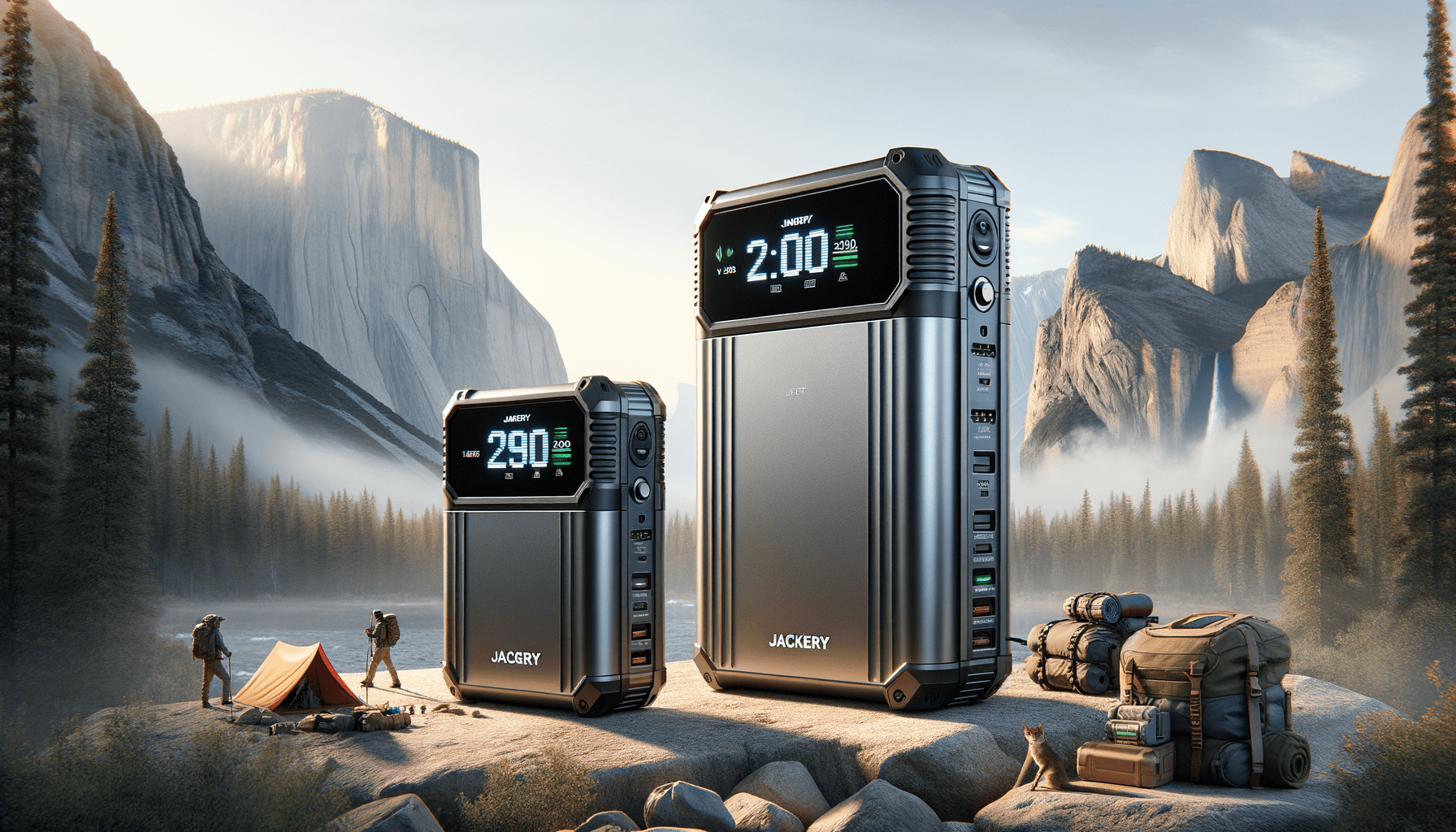Are you on the hunt for a portable power station and find yourself torn between the Jackery 500 and the EcoFlow Delta? You’re not alone! These two powerhouses are common contenders when it comes to choosing the perfect mix of energy storage and portability. This article is here to give you a detailed technical showdown to make that decision a bit easier.
Specs at a Glance
| Feature | Jackery Explorer 500 | EcoFlow Delta |
|---|---|---|
| Battery Capacity & Power | 518Wh | 1260Wh |
| Outlets | 1 AC, 2 DC, 1 Car | 6 AC, 1 Car |
| USB Ports | 3 USB-A | 2 USB-A, 2 USB-A Fast, 2 USB-C |
| Surge Capacity | 1000W | 3300W |
| Solar Panel Compatibility | SolarSaga | EcoFlow 160W |
| Charging Methods | Solar, Wall, Car | Solar, Wall, Car |
| Charge Time | Solar: ~9.5h, Wall/Car: ~7.5h | Wall: ~1h 36min |
| Operating Temperatures | Varies | Standard ranges |
| Dimensions (LxWxH) | 11.8 x 7.6 x 9.5 in | 15.7 x 8.3 x 10.6 in |
| Weight | 13.3lbs | 30.9lbs |
In-Depth Comparison
Power to Go: Jackery 500
The Jackery 500 boasts a 518Wh lithium-ion battery and a pure sine wave inverter with a respectable continuous output of 500W and surge capacity of 1000W, allowing you to power a variety of small to medium-sized devices. It’s equipped with versatile ports including an AC outlet, making it suitable for a broad array of appliances.
EcoFlow Delta – Powerhouse on the Move
With a behemoth 1260Wh capacity and powerful AC output capable of a 1800W continuous draw and 3300W surge, the EcoFlow Delta is a reliable beast for more demanding energy needs. It’s clear that EcoFlow targeted not just the casual user but also those needing to power heavy-duty tools or multiple devices simultaneously.
Charging Made Easy
Both the Jackery 500 and EcoFlow Delta support solar, wall, and car charging, maintaining convenience and accessibility in various scenarios. However, the Delta features EcoFlow’s X-Stream fast charge technology, going from 0% to 80% in about an hour, which easily outpaces the 7.5 hours of wall charging for the Jackery 500.
Portability: Size Does Matter
The Jackery, weighing in at a mere 13.3lbs, is significantly lighter than the 30.9lbs Delta, which may be an essential factor for those who have to frequently move their power station. Its smaller form factor also means more manageable transportation and storage compared to the bulkier EcoFlow Delta.
Solar Charging: Green Energy Options
Jackery’s compatibility with the SolarSaga series and EcoFlow’s pairing with their 160W Portable Solar Panel offer eco-friendly charging methods. While both can be powered by the sun, the time it takes for a full solar charge varies significantly, with the Jackery requiring approximately 9.5 hours compared to the Delta’s faster solar input capability.
Safety & Protection
Safety is paramount, and both brands have taken strides to ensure the protection of the user and devices. The Jackery 500 features an intelligent Battery Management System and a pure sine wave inverter for stable power output. The EcoFlow Delta also prizes safety with its robust build to shield from overcharging, overcurrent, and overheating.
Warranty and Customer Support
Jackery offers an appealing 2-year warranty, with an additional year for those who purchase through their official website, while EcoFlow’s warranty policy is similarly competitive, ensuring peace of mind for the end-user. It would be wise to consult their respective sites for the most up-to-date information on warranty and support.
Conclusion: Which One Powers Your World?
The Jackery 500 and EcoFlow Delta each caters to different needs and preferences. For those prioritizing weight and simplicity, the Jackery 500 may be the way to go. However, for individuals or professionals in need of more substantial power outputs and rapid charging, the EcoFlow Delta might be the right choice. Carefully weigh your needs against the capabilities of each to make a decision that will keep you powered up wherever you go.




Leave a Reply